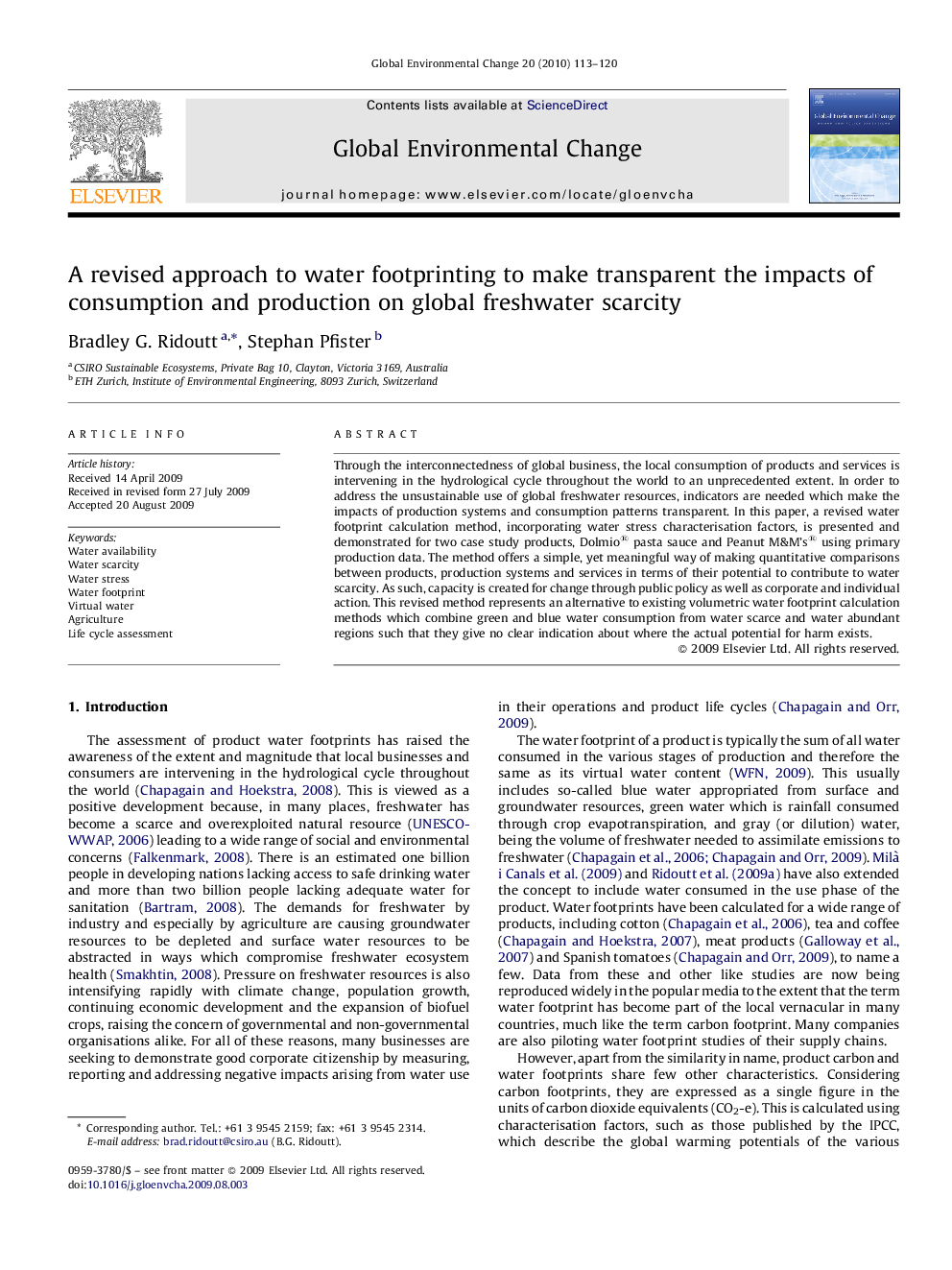| Article ID | Journal | Published Year | Pages | File Type |
|---|---|---|---|---|
| 1055018 | Global Environmental Change | 2010 | 8 Pages |
Through the interconnectedness of global business, the local consumption of products and services is intervening in the hydrological cycle throughout the world to an unprecedented extent. In order to address the unsustainable use of global freshwater resources, indicators are needed which make the impacts of production systems and consumption patterns transparent. In this paper, a revised water footprint calculation method, incorporating water stress characterisation factors, is presented and demonstrated for two case study products, Dolmio® pasta sauce and Peanut M&M's® using primary production data. The method offers a simple, yet meaningful way of making quantitative comparisons between products, production systems and services in terms of their potential to contribute to water scarcity. As such, capacity is created for change through public policy as well as corporate and individual action. This revised method represents an alternative to existing volumetric water footprint calculation methods which combine green and blue water consumption from water scarce and water abundant regions such that they give no clear indication about where the actual potential for harm exists.
